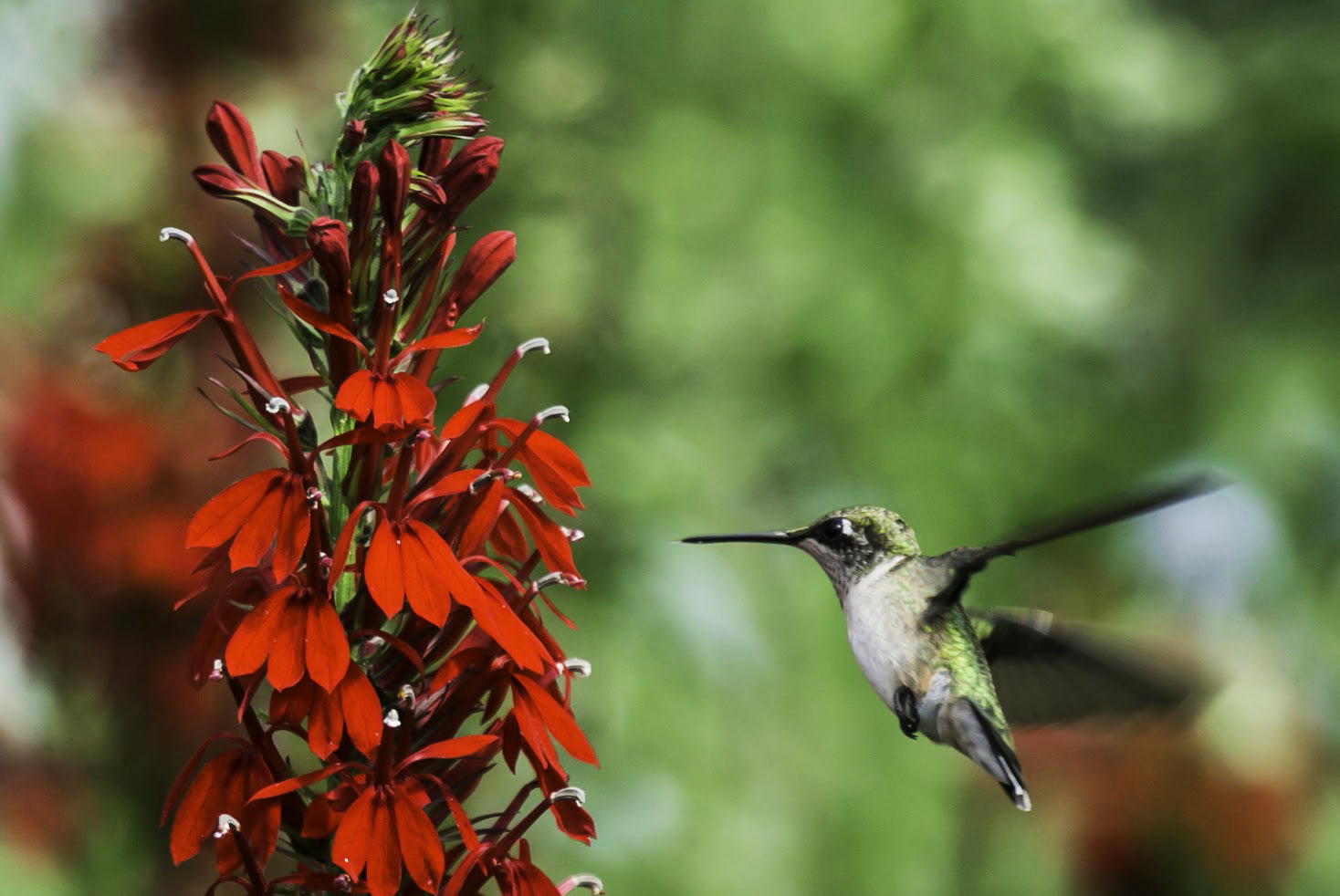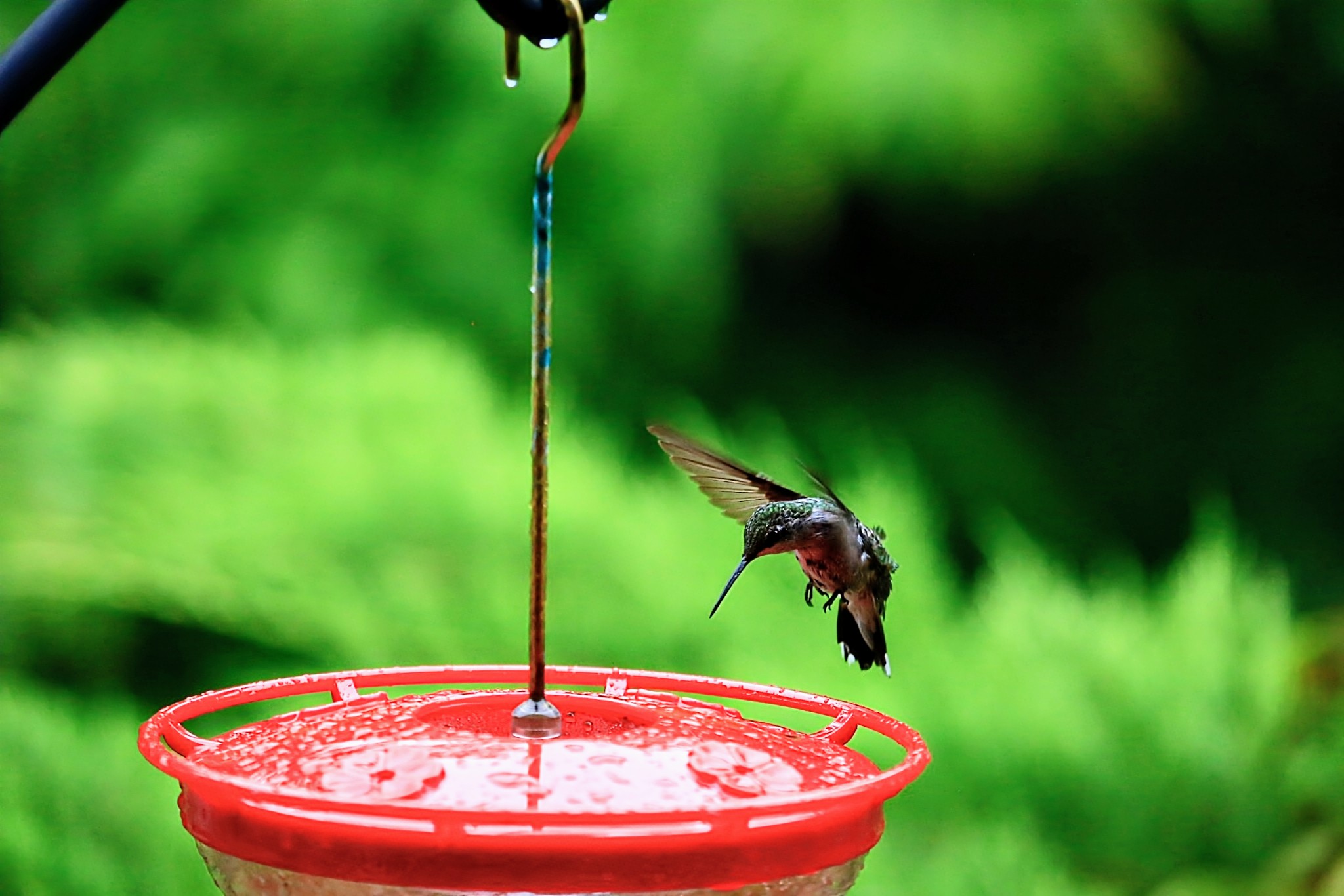Hummingbirds
Migration and Metabolism
Despite measuring merely 3–4 inches and tipping the scales at under a quarter of an ounce, ruby throated hummingbirds embark on an extraordinary journey. Come autumn, they make their way from the eastern woodlands of the United States to wintering grounds in Mexico and Central America—often crossing the Gulf of Mexico in a single, nonstop flight of roughly 600 miles. When spring flowers like azaleas, columbines, and rhododendrons bloom, these birds navigate back north, arriving in regions such as Kansas between mid April and early May.
In order to sustain their 80 wingbeats per second flight speed, hummingbirds must feed nearly constantly. An adult may visit feeders or blossoms seven times every hour, consuming nectar equivalent to half its body weight each day. Along with nectar, insects provide a steady snack filled with vital proteins and nutrients.
Hummingbirds as Pollinators
While most pollinators are insects, hummingbirds do play a role in pollinating some plants. As hummingbirds feed on the nectar of flowers such as columbines and cardinal lobelia plants, their wings and beak collect pollen, which then get transported to nearby flowers. This helps many native plants reproduce and maintain healthy ecosystems.
Crafting a Hummingbird Friendly Habitat 
The first thing to consider is what plants to incorporate into your yard that will not only attract hummingbirds but will also provide them with nutrients. Long, tubular flowers that are pink, red, or purple are excellent at attracting hummingbirds. Incorporating local species such as coral honeysuckle (Lonicera sempervirens), bee balm (Monarda), and cardinal flower (Lobelia cardinalis) not only supplies nectar but also supports the insects hummingbirds rely on for protein. Timing is also important. When choosing plants, consider choosing a variety of plants that bloom at different times of the year so that food is accessible year-round.
Should you hang hummingbird feeders in your yard? Sure! Just keep these things in mind if you do:
- Sugar Solution: Mix one part white granulated sugar with four parts warm water. There’s no need to boil; stirring until the sugar dissolves is sufficient.
- Feeder Placement: Hang feeders in dappled shade to slow down fermentation and keep nectar fresh.
- Maintenance: Empty and rinse feeders every two to three days (more often in hot weather) to prevent mold, fermentation, and bacterial growth. Regularly scrub all feeder parts in hot, soapy water to remove sticky residue and dead insects
For more detailed information and region-specific advice, consult your local extension services or visit the following resources:
- K-State Extension: Backyard Birding Guides #8 – Hummingbirds
- Iowa State University Extension: Hummingbirds and How to Attract Them
- Nebraska Extension: To Feed a Hummingbird
by Amy Keigher, Natural Resources Extension Agent, 2025
